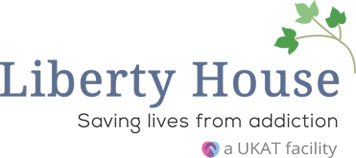Last Updated:
March 19th, 2025
What exactly is an alcoholic face?
An alcoholic face refers to the physical changes in a person’s appearance that happen due to long-term alcohol use. These changes can show up as persistent redness, puffiness or visible blood vessels, giving the skin a flushed or uneven look.
But an alcoholic face doesn’t just suggest there are issues with skin. These signs can be an indication that alcohol is putting strain on the body, especially the liver and circulatory system. While not everyone who drinks heavily will develop these facial changes, they can be a visible sign that alcohol is having a deeper impact.

Alcoholic face in long-term alcohol use
Drinking heavily over time can lead to more lasting facial changes. These don’t happen overnight but as alcohol continues to affect the body, the signs become more noticeable and may not completely go away even after stopping drinking.
Do these signs always mean that the person is an alcoholic?
The physical signs associated with an alcoholic face do not always mean that someone has an alcohol addiction. It can also be linked to other medical conditions and lifestyle factors. Below, we take a look at some of these factors:
Other causes of facial redness and broken blood vessels
- Rosacea: A chronic skin condition that causes persistent redness and visible blood vessels, often mistaken for signs of alcohol use.
- Bulging veins: A condition that can cause veins across the body to appear on the surface of the skin. It is not always linked to heavy alcohol use.
- Extreme temperatures and sun exposure: This can damage blood vessels, leading to permanent redness.
Other causes of puffiness and swelling
- Liver disease unrelated to alcohol: Conditions like non-alcoholic fatty liver disease (NAFLD) can cause water retention and facial swelling.
- Kidney problems: Impaired kidney function can lead to fluid buildup in the face and body.
- Dietary factors: High salt intake can cause temporary bloating and puffiness.
Other causes of a gaunt or prematurely aged appearance
- Weight loss and malnutrition: Not eating enough or absorbing nutrients properly can cause hollow cheeks and sagging skin.
- Smoking: Reduces collagen and elastin in the skin, leading to premature wrinkles.
- Chronic stress and poor sleep: Can contribute to dark circles, dull skin and a permanently tired look.
Are facial changes alone enough to suspect alcohol addiction?
One or two facial changes alone don’t necessarily mean someone has an issue with alcohol. But if these signs appear alongside other physical or behavioural symptoms, it may be a sign of long-term alcohol use. Alcohol addiction affects the body in various ways, and while facial changes can be one of the indicators, other symptoms often provide a clearer picture of whether alcohol is having a serious impact.
Some additional signs that could indicate alcohol addiction include:
Unexplained weight loss or poor appetite: Chronic alcohol use can interfere with nutrient absorption, leading to malnutrition and unintended weight loss. A person struggling with alcohol addiction may also skip meals, relying on alcohol for calories, which can result in muscle loss and a frail appearance.
Shaky hands or tremors: Because alcohol affects the nervous system, those suffering from alcohol addiction can develop hand tremors. These are particularly noticeable in the morning or after a period of not drinking. Tremors can indicate that the body has become dependent on alcohol and is struggling to function without it.
Alcohol smell on the breath, even in the morning: Waking up with the scent of alcohol still on the breath can suggest heavy drinking the night before or drinking late into the night. In some cases, it may indicate drinking first thing in the morning to ease withdrawal symptoms, which is a key sign of dependence.
If these signs are present alongside noticeable facial changes, it might be time to take a closer look at alcohol consumption and how it may be affecting overall health. Seeking professional advice can help determine whether alcohol use has become a problem and what steps can be taken to regain control.
Can facial changes from alcoholism be reversed?
For those who have noticed changes in their face due to alcohol, a big concern is whether these effects can be undone. Some signs may fade with time, but others may become more permanent. It depends on how long the person has been drinking and, most importantly, how much damage has already been done.
What improves after quitting alcohol?
Many short-term facial changes begin to subside after stopping alcohol. Swelling, puffiness and redness often begin to fade within days or weeks, especially with good nutrition and better sleep. Skin that was once dry and dull can start to regain its glow, and dark circles under the eyes may become less noticeable.
What changes may be permanent?
Unfortunately, some long-term effects are harder to reverse. Broken capillaries (tiny, visible blood vessels), deep wrinkles from collagen loss and severe rosacea may not fully go away. If alcohol has caused significant liver damage, signs like jaundice (yellowing of the skin and eyes) might take longer to improve or may indicate a more serious health issue.
How can someone support skin recovery?
Even if some effects take time to heal, there are steps that can help speed up recovery:
- Stay hydrated. Drinking plenty of water helps flush toxins and improves skin elasticity.
- Eat nutrient-rich foods. Vitamins A, C and E are essential for skin repair.
- Protect the skin. Using moisturiser and sunscreen can prevent further damage.
- Consider medical treatments. Dermatological procedures, like laser therapy, can help reduce visible blood vessels.
What to do if you’re worried about a loved one
Noticing signs of alcohol addiction in a loved one can be concerning, especially if physical changes suggest their body is struggling with the effects of alcohol.
If you’re worried about their drinking, having an open and supportive conversation is a good first step. Rather than blaming or pressuring them, express your concerns with care and encourage them to consider whether they may need help with alcohol.
If they’re struggling to stop or experiencing alcohol withdrawal, professional support can make a difference. At Liberty House, our alcohol addiction treatment programme provides a structured and compassionate approach, including detox, therapy and holistic care. If you need alcohol help for a loved one, reach out today. We’re here to support both you and them in taking the first step towards recovery.
(Click here to see works cited)
- “Rosacea: Symptoms, Causes, Triggers & Treatment.” Cleveland Clinic, 6 Feb. 2025, my.clevelandclinic.org/health/diseases/12174-rosacea.
- “Bulging Veins: Causes, Symptoms and Treatment.” Cleveland Clinic, 7 Feb. 2025, my.clevelandclinic.org/health/diseases/22877-bulging-veins.
- “Sun Damage.” Mayo Clinic, Mayo Foundation for Medical Education and Research, 24 June 2023, www.mayoclinic.org/diseases-conditions/sunburn/in-depth/sun-damage/art-20546834.
- “Nonalcoholic Fatty Liver Disease.” Mayo Clinic, Mayo Foundation for Medical Education and Research, 4 Apr. 2024, www.mayoclinic.org/diseases-conditions/nonalcoholic-fatty-liver-disease/symptoms-causes/syc-20354567.
- “Kidney Disease: Can It Cause Itchy Skin and Rashes?” Medical News Today, MediLexicon International, www.medicalnewstoday.com/articles/rash-kidney-disease-itchy-skin. Accessed 28 Feb. 2025.
- “Are You Eating Too Much Salt?” WebMD, WebMD, www.webmd.com/diet/ss/slideshow-too-much-salt. Accessed 28 Feb. 2025.





